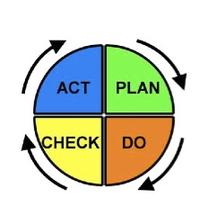How to Minimize Trauma When Politics Change
 Many are anticipating politics to change and these changes are arousing strong feelings. These include fear, grief, emotional collapse and a general sense of overwhelm and exhaustion. For many a strong sense of helplessness combined with an intense fear have led to trauma responses of fight, flight or freeze.
Many are anticipating politics to change and these changes are arousing strong feelings. These include fear, grief, emotional collapse and a general sense of overwhelm and exhaustion. For many a strong sense of helplessness combined with an intense fear have led to trauma responses of fight, flight or freeze.
If this sounds like you, I would like to offer three steps you can take to help prevent these responses from becoming chronic and ultimately self-harming. These steps focus on being able to soothe yourself, find support among friends and take effective and life-enhancing actions for the benefit of others.
STEP 1. SELF SOOTHE
Knowing how to calm your nervous system is essential so that the unconscious traumatic responses can take a back seat. For nearly everyone this is best accomplished through some form of a mindfulness practice. By “mindfulness” I mean intentionally shifting your attention away from what distresses you to observing in a nonjudgmental way that which is neutral or pleasant and is happening right now.
 It is possible to be mindful in many ways. Examples include
It is possible to be mindful in many ways. Examples include
- Noticing textures, colors or shapes of objects in your immediate environment
- Listening to sounds in nature
- Paying attention to the taste and scent of foods you prepare and eat
- Watching the rise and fall of your torso as you breathe
- Feeling how muscles move during exercise or yoga
Practicing mindfulness has the potential of interrupting the mind’s habitual patterns of perceiving threat when the familiar social and political worlds become uncertain. When the patterns break, calm has a chance to enter, bringing with it a sense of peace and new insights into how best to respond to known or anticipated changes. Being able to self- sooth in times of stress is essential for the next two steps.
STEP 2. CONNECT WITH FRIENDS
The second step is to connect deeply with 5-10 people whom you can trust and care about what you have to say. These people can help in several ways. One is they can offer you a place where you can safely share your fears and grief. This kind of sharing helps to keep your heart open.
 Open hearts allow for heart and love-centered thinking and action. From this state of mind you can recognize that we are not separate; what happens to one happens to all. Instead of seeing the world as us versus them, the perspective becomes us with them. This helps you to hold the tension between what is and what you want without becoming aggressive or violent. With a suspension of aggression creative ways of addressing what you may have seen initially to be unsolvable problems appear.
Open hearts allow for heart and love-centered thinking and action. From this state of mind you can recognize that we are not separate; what happens to one happens to all. Instead of seeing the world as us versus them, the perspective becomes us with them. This helps you to hold the tension between what is and what you want without becoming aggressive or violent. With a suspension of aggression creative ways of addressing what you may have seen initially to be unsolvable problems appear.
These people also can offer you encouragement when darkness closes in. They can remind you of your inner wisdom that knows what to do next. They can help you do a reality check by identifying the facts of situations instead of having your imagination run wild with what-ifs. In addition, you can draw upon them for courage when you want to stand up for yourself and others but feel too intimidated or insignificant to do so. Finally, by staying connected with others, you can be mutually resourced in the face of those who want to create division and isolation in order to control dissension.
STEP 3. TAKE ACTION
Taking action to express love or kindness toward others or the planet is the third step. For some, this is the most challenging step. Moving beyond your personal world or those of your friends brings up resistance. You may hear voices inside your head that say:
- “The changes that are needed are too big for one person to address.”
- “Others can do it because they know more than me.”
- “There isn’t enough time to fix things.”
- “I don’t have influence with powerful people.”
 These voices are meant to keep you safe and living in the illusion that things are not so bad or to keep you from seeing and feeling the pain of others. Unfortunately, neither may be helpful at this time in the life of this country. By following the first two steps you may have enough motivation and confidence to act.
These voices are meant to keep you safe and living in the illusion that things are not so bad or to keep you from seeing and feeling the pain of others. Unfortunately, neither may be helpful at this time in the life of this country. By following the first two steps you may have enough motivation and confidence to act.
Asking the question, “What do I really care about or feel passionate about?” is often the place to begin. Paying attention or being mindful of how you already spend your time and money may give you a clue. Friends, co-workers or classmates may also be good sources for answers. A big cultural shift, which seems to be on the way, may affect many areas of your life. Notice as you read the following list of topics if any blips of interest or concern arise.
Education Health care Immigration Civil rights Environment Food production and safety
Fair trade Care of the homeless and veterans Military spending Employment Energy production and delivery Prison system
Once you identify an area of interest you may decide to join an existing organization that already is taking steps to address the problem or you may by inspired to develop new a one. With either path, some strategies may yield the most for your efforts. These include collaborating, asking for help and listening to other ideas with an open mind.
Communicate skillfully in ways that help you to understand the “other,” empathize, find common ground and welcome differences. Learn to hold tension when there is conflict until the best workable solution comes forth. This is important because how you relate to others in the group is a microcosm of the larger world that includes both destructive and creative forces.
If you decide to join an existing group, decide how you can best contribute. Perhaps it is financially, communicating with law makers, or doing direct service such as tracking how climate change affects the wildlife. While your local effort may seem small, it can multiply tremendously when many local efforts join to become a nationwide effort. When only ten percent of the population – the tipping point of critical mass for social change- buys into an idea the future can shift significantly.
SUMMARY
In summary, the anticipated changes in the social, cultural, economic and environmental arenas of life have the potential to be traumatic events. Many people are already feeling helpless and intense fear or terror. Their nervous systems are stuck in a threat response. The following steps may help alleviate the stress:
- Know how to soothe yourself. This usually involves mindfully directing your full attention without judgment to a neutral or pleasant experience that is happening right now.
- Connect with those whom you can trust to care for you and to listen to your concerns. Their support can help you to think creatively, act from caring and keep you in touch with reality.
- Take action in ways that benefit others or the environment. Perhaps this means you find a new way to solve a problem or join with existing organizations that have already laid the groundwork for effective action. By acting locally in groups with a nationwide base your efforts can lead to significant changes.
Wishing all of us good health personally and in community,
Maggie Kerrigan, MA LPC




